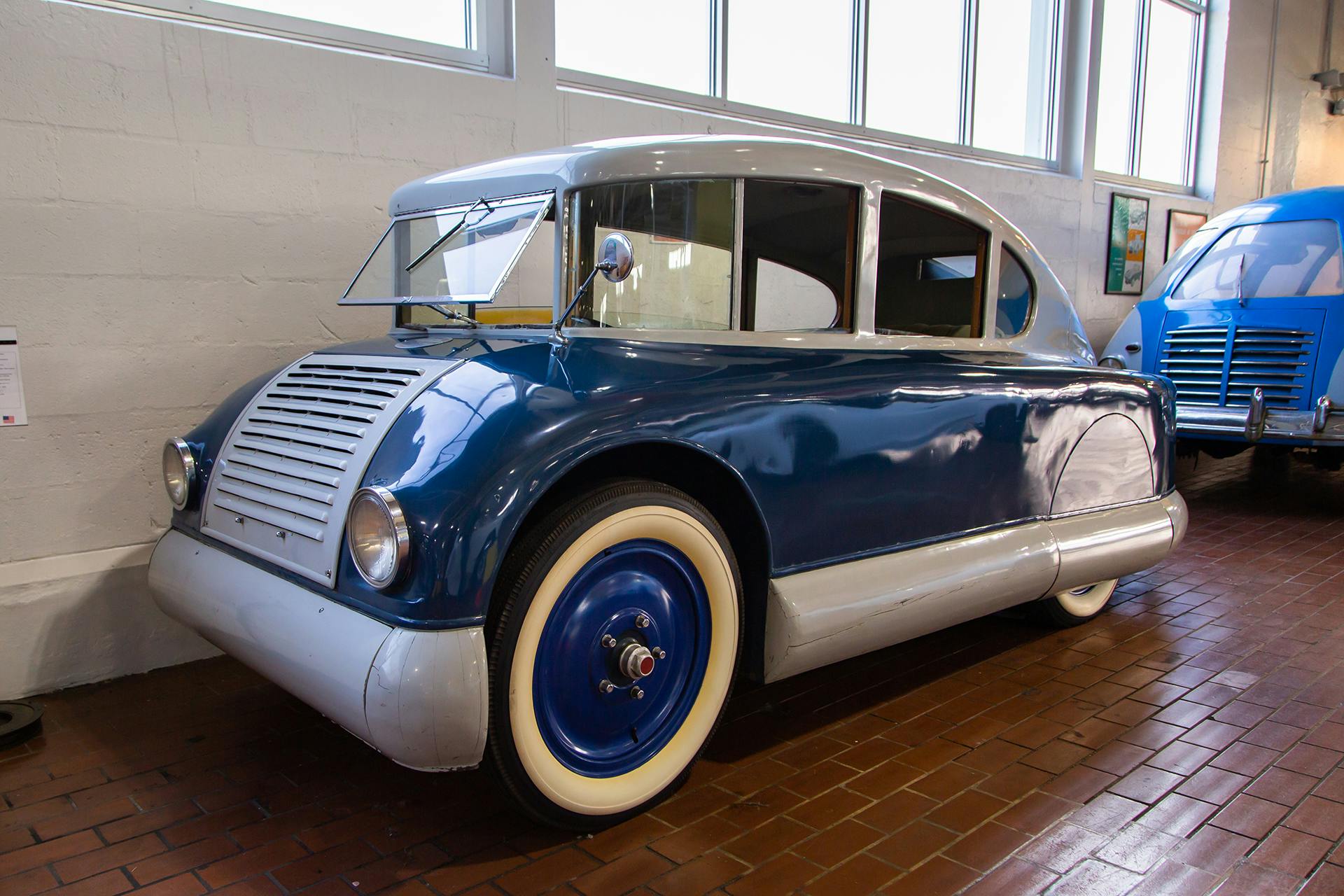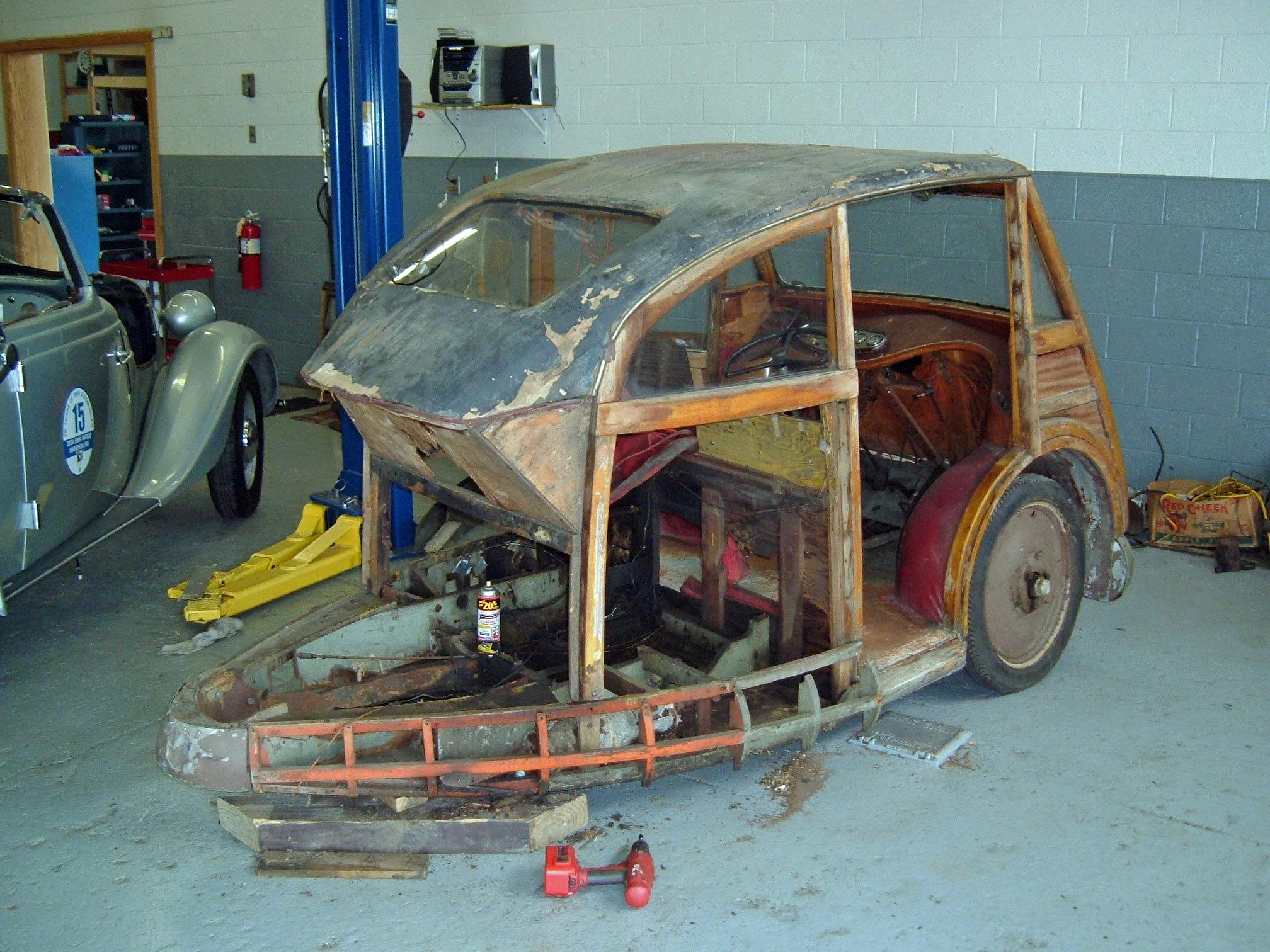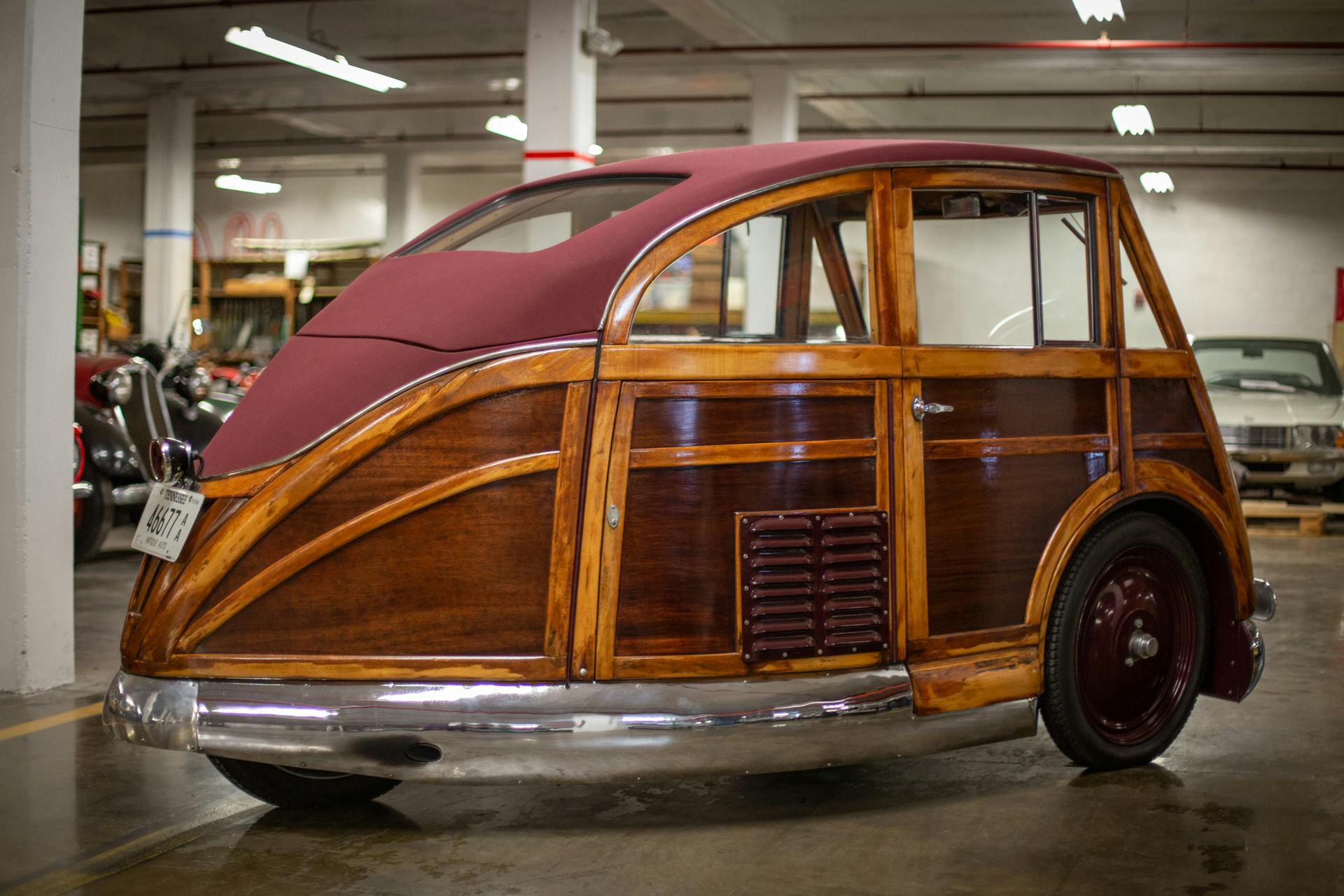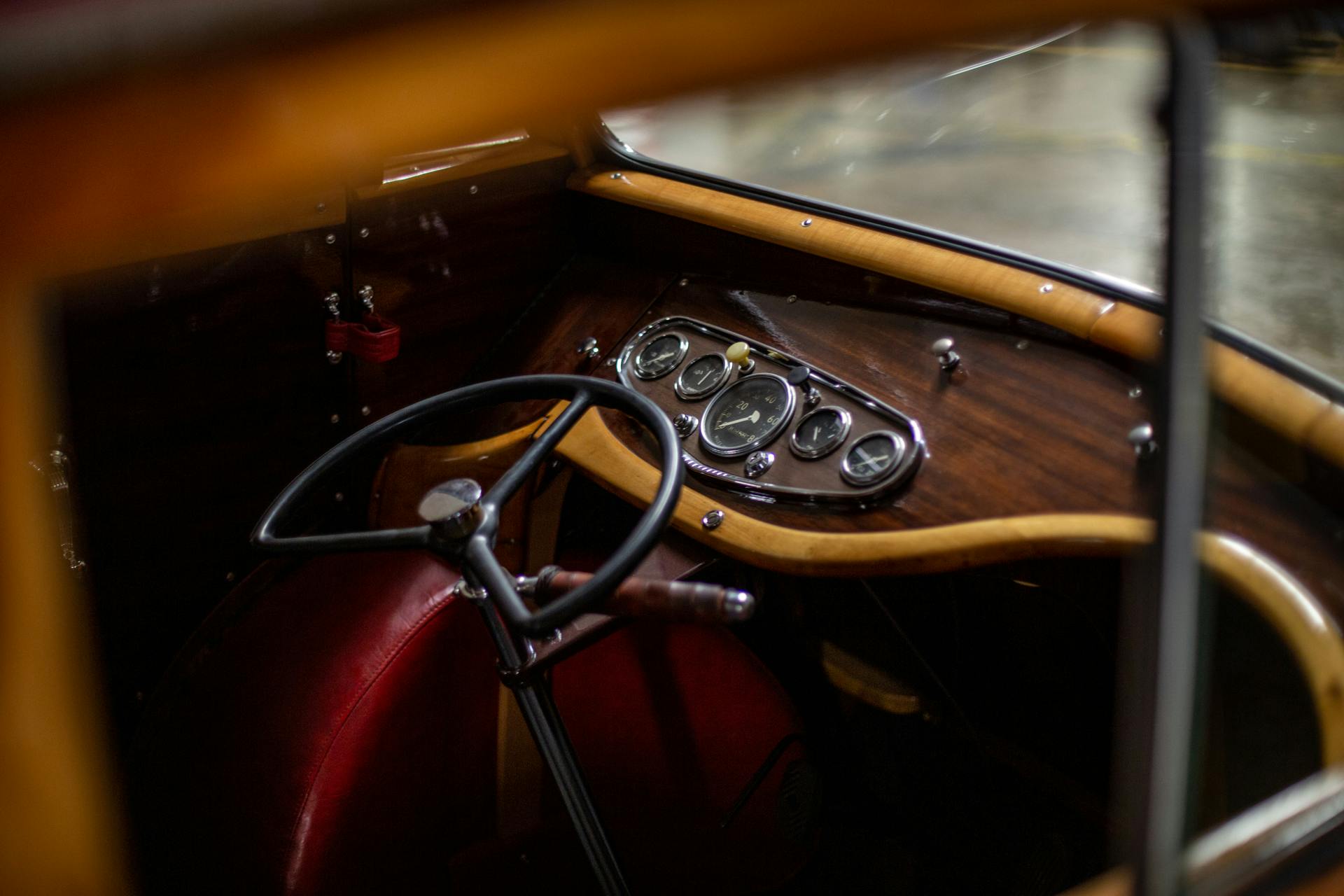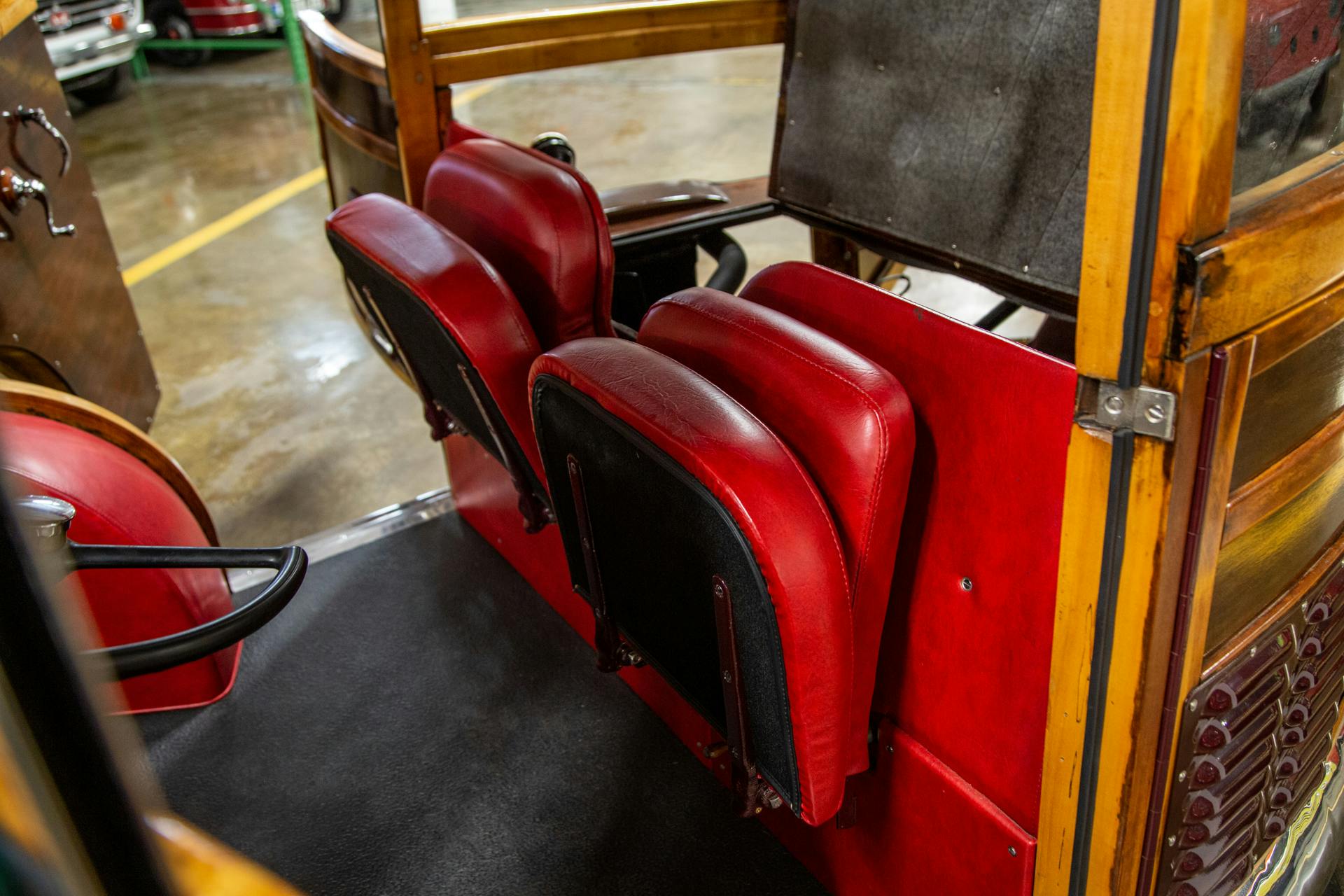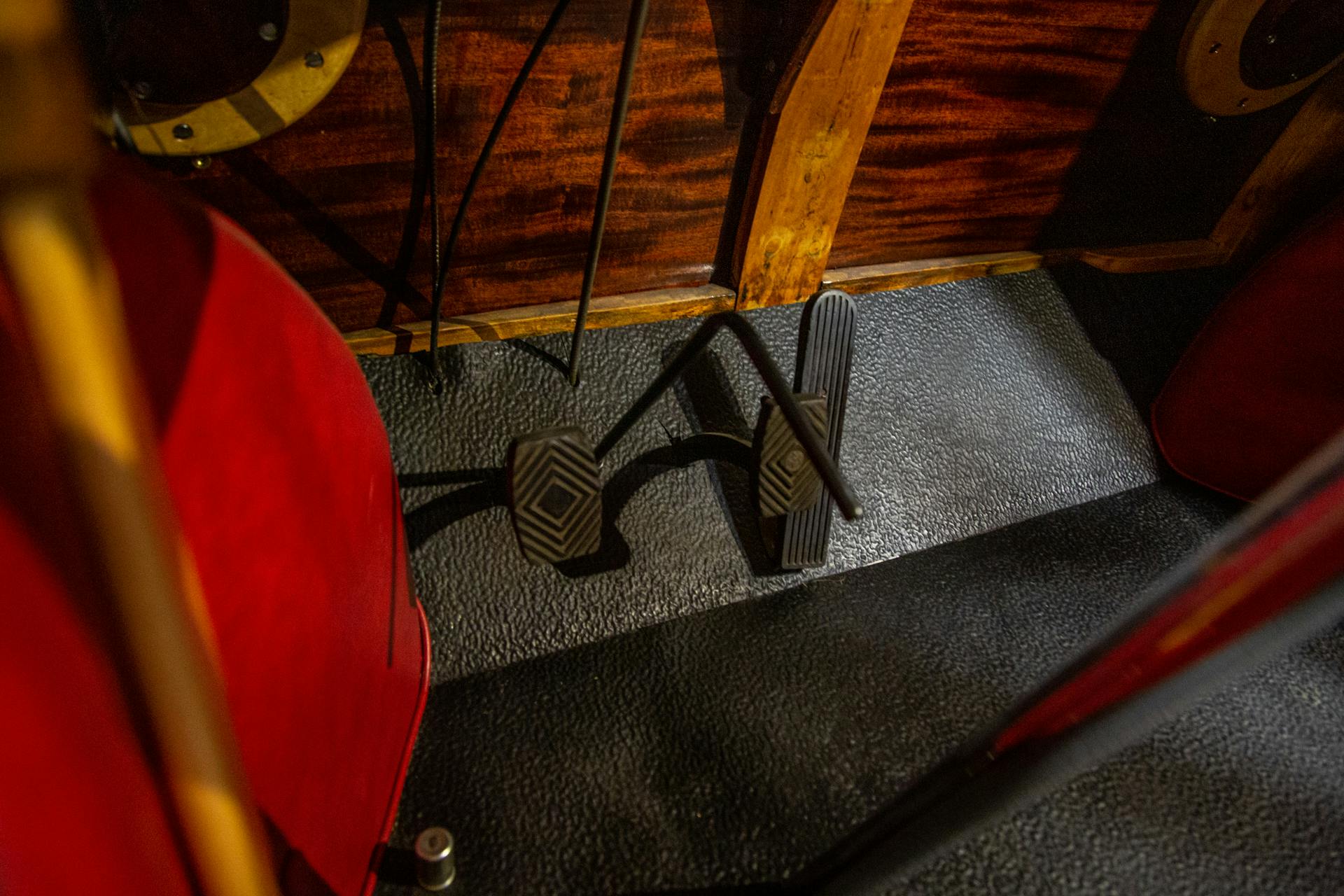The 1950 Martin Stationette prototype is a wacky, wood-bodied one-off
When looking at the storied past of the automobile, it’s intriguing to see how we ended up with what we define as a “car” today. Things such as headlights, rear view mirrors, a proper suspension, ergonomics, or any semblance of care towards the safety of passengers didn’t arrive on day one. Almost all of these features had to have their need realized, be created, and then be implemented over the course of decades of trial and error. Thousands of different manufacturers tried their hand at creating the next big development in the automotive world leading to what we know as the automobile today.
Sometimes manufacturers were successful at introducing a new aspect of design or engineering for the automobile, and they reaped the success of that innovation. However, more often than not, attempts at a new design or interpretation of the automobile were met with bitter failure. Whether it be from lack of financial interest, stiff competition from established automakers, or the idea itself not being too brilliant to begin with, many of these manufacturers never got their ideas off the ground, sometimes leaving only a sole prototype built in their attempts at bringing their genius innovation to life.
Nonetheless, it is important to recognize as historic these failed attempts at reinventing the automobile. They showcase how the evolution of the modern vehicle was not a smooth road, but rather one filled with potholes, cracks, and dead ends. Earlier this year we made a trip to the Lane Motor Museum, a shrine to many of the unique and outright bizarre creations people have put on wheels and deemed to be a car, truck, boat, plane, or a combination of the sorts.
While browsing their collection, one particular manufacturer caught our eye: Martin. Martin went by many names throughout the years (Martin Aeroplane Factory, Martin Development Laboratories, Commonwealth Research Corporation, and Martin Stationette Associates, to name a few), but its cars seemed to have one commonality throughout the years: a focus on aerodynamics.
Martin was founded by James V. Martin, a pilot and inventor, in the mid-1910s with hopes of applying his knowledge from the airplane manufacturing industry to the automobile. Martin had originally begun his foray into the wide world of cars with several prototypes, including the Martinette and the Aerodynamic, both of which reside in the Lane Museum’s collection. These vehicles were very innovative in terms of aerodynamics for the time, when most cars more closely resembled a brick than they did anything that could be argued to be “streamlined.” Both the Aerodynamic and Martinette featured rounded front faces and tapered rear ends, which were relatively unused designs at the time.

Through his aerodynamic creations, Martin was able to attract a lot of press, especially through his use of aluminum and wood taken from his airplane design days. However, despite this positive press, Martin was unable to convince any financial backers to invest in his project in order to create anything other than the two prototypes.
Almost 20 years later, Martin decided to throw his hat into the ring once again. Based on his observations of small, regional airports, Martin thought that many aircraft mechanics were only using 50 percent of their time actually working, meaning he could tap into that unused labor for building his cars. His newest creation, dubbed the Martin Stationette, was practically the exact same design as his Martinette from 18 years prior, but with a wooden body rather than aluminum one and two side-opening doors instead of the single front-opening door of the Martinette.
The Martin Stationette was built under Martin Stationette Associates (a.k.a. Commonwealth Research Group) and is powered by a four-cylinder, 65-cubic-inch, water-cooled Hercules engine paired to a three-speed Harley Davidson transmission from of a work truck, so it has a reverse gear. The Stationette only has room for two passengers, as well as a small space for luggage above the rear wheel. These meager dimensions were a selling point for Martin, as he originally envisioned the Stationette to be used for suburban commuters or disabled veterans, with its small size helping to ease traffic congestion caused by larger cars. The price? $995 in the mid-1950s, or roughly $10,000 today.
In 1954, Martin showcased his Stationette at the World Motor Sports Show, where it won the Grand Prix Award and was touted as one of “America’s Economy Cars of the Future.” Despite these claims and positive response from the public, history repeated itself for Martin in regard to the Stationette as he was unable to convince potential investors to fund his project, leaving the prototype as the sole Stationette to ever be built.
We spoke with David Yando, Manager of the Lane Motor Museum, about how the museum came to acquire the Stationette. Surprisingly, he told us that they bought it off of eBay. “Someone had donated the Stationette in very poor condition to the AACA Museum in Hershey, Pennsylvania,” David said. “They didn’t know much about the car and weren’t going to do anything with it, so they decided to sell it. I was lucky enough to come across the listing on the classic eBay motors under the custom section, and we picked it up since we already had the other two Martins on display.”
When the Lane Motor Museum acquired the Stationette, it was in dire need of repairs. To bring the Martin back to its former glory, they hired a local Nashville wood worker to help save what he could of the body. He used epoxy injection to salvage what original parts that he could and then replicated what needed to be replaced, using a mix of maple, spruce, mahogany, and plywood as used in the original construction.
When we asked David what the Stationette was like to drive, he simply replied: “Terrible.” He explained how since the Stationette doesn’t use a conventional suspension, the wheels have no compliance if you hit a rut or a hole. There’s no back or forth movement in the wheel, only vertical, so the wheels can’t lean or self-center. “It has a terrible oscillation at speed. I had to drive the car about a mile on four-lane divided highway and by the time I got up to about 35 mph, it was shaking so bad you couldn’t see.”
The suspension David mentioned was a practice that Martin carried over from his experience in airplane manufacturing. Rather than using conventional springs, the Stationette utilizes what is essentially a sliding pillar front suspension held in place by aircraft cord. This setup did have its benefits, in that you could adjust the suspension strength by how many wraps of cord you used, as well as being very cheap to replace, but it turned out to be very impractical for street use.

“The car was never intended to be used for long drives,” David continued. “Martin had planned for them to be used for local trips to a train station or commuting to/from the airport. […] For what it was, it served its purpose.”
According to David, it is speculated that Martin might not have had much intention of becoming a major automotive manufacturer. An alternative theory is that he planned to patent new ideas and designs for vehicles, then make money off of licensing fees or lawsuits when his patents were infringed upon. “He was an innovator, but he was never able to get anything to take off,” David told us. “When he worked in the airplane construction industry, he came up with some great ideas for parts that were useful, but never quite made an entire aircraft. He would then attempt to license out his parts and make money off of the patents, so I wouldn’t doubt if he wanted to do the same for his cars.”
Due to Martin’s inability to attract investors, he was never able to fully fund his dream and the Stationette succumbed to the same fate as his Aerodynamic and Martinette. This single prototype was the only Stationette ever built before falling by the wayside of automotive history. If it weren’t for the Lane Motor Museum and its passion of preserving and showcasing the oddities of the world’s automotive past, the Martin might have been forgotten. Luckily, the museum has been able to collect all three surviving Martin models in existence (if you happen to know the whereabouts of the Martin Dart, give them a call) and have them on regular public display for all to see.
The Lane Motor Museum in located in Nashville, Tennessee, and has over 500 cars in their collection, about 150 of which are on display at any given time. The museum is currently closed due to pandemic-related shutdowns, but it has plans to re-open in early June. If you would like to learn more about the museum, be sure to check out the website, as well as the Lane’s Facebook and Instagram pages for more content on this incredible collection of vehicles!
This article originally appeared at historicvehicle.org, as part of the HVA’s Drive History Profile series.

